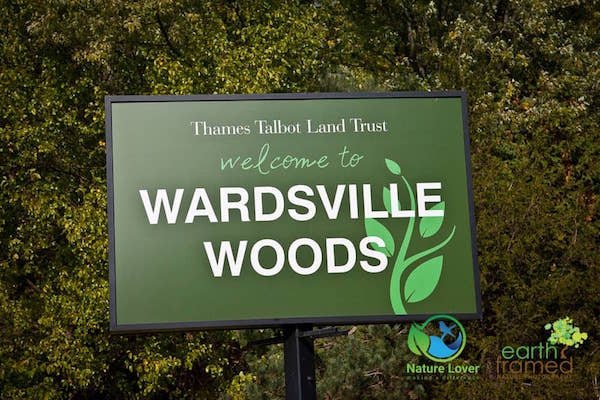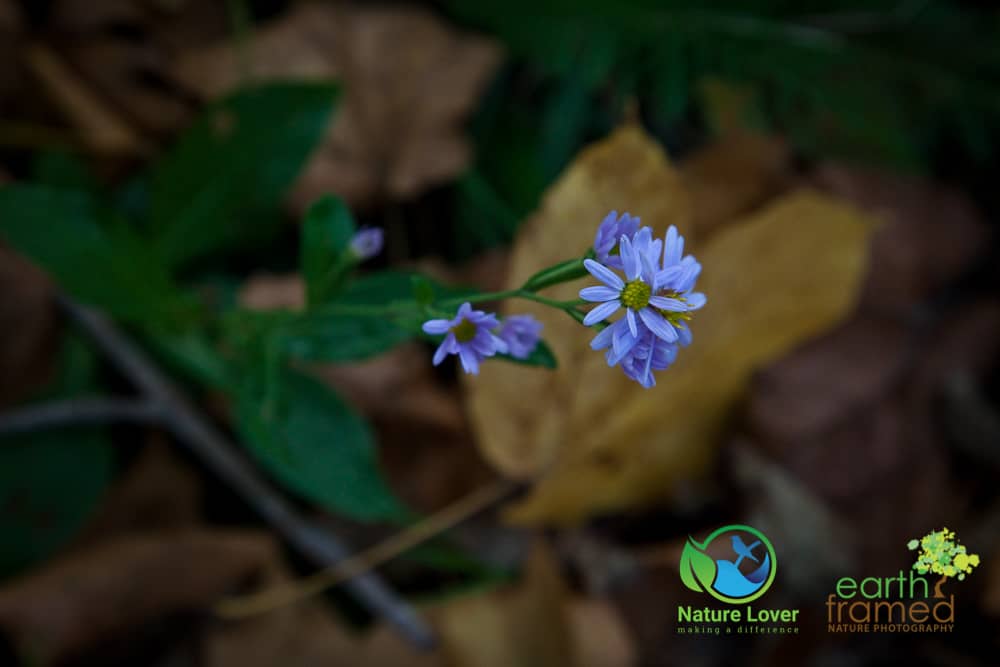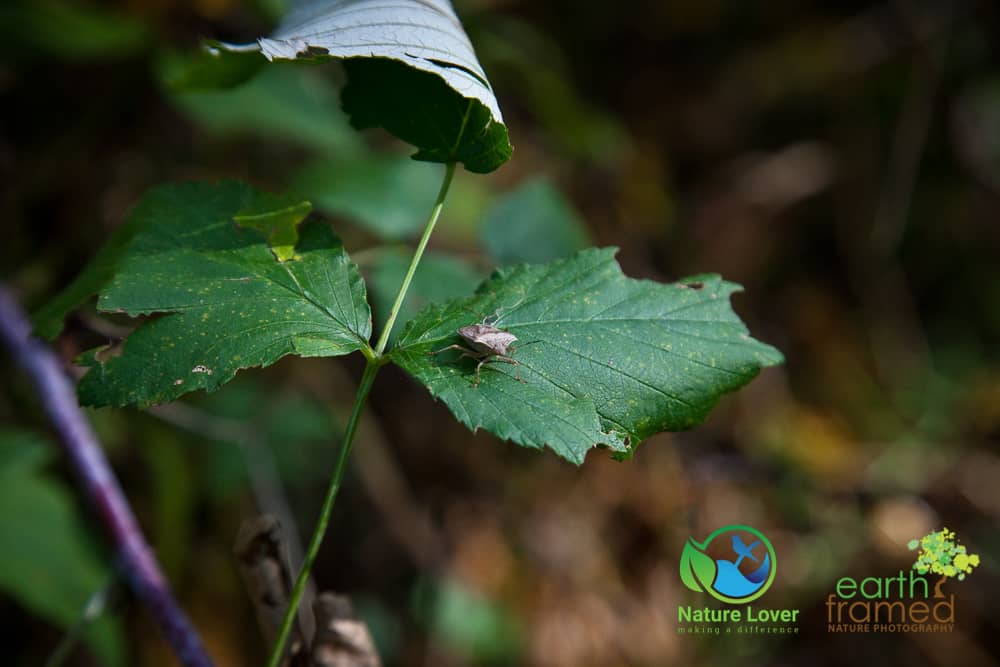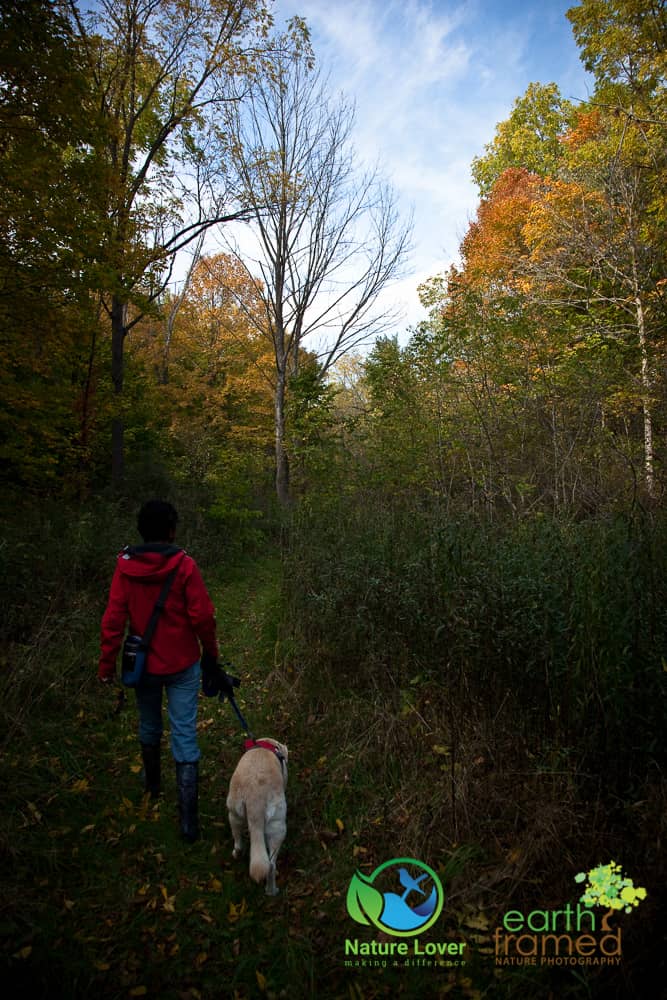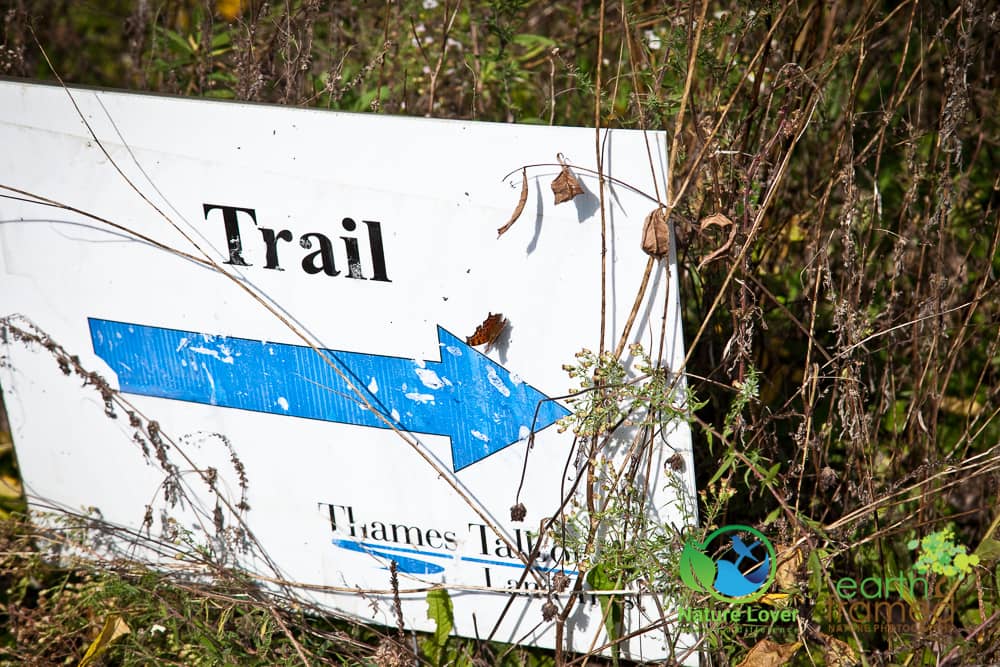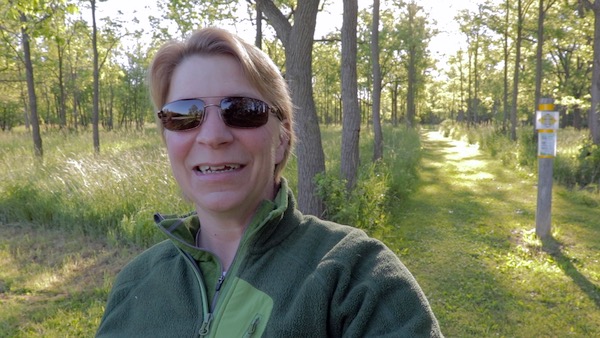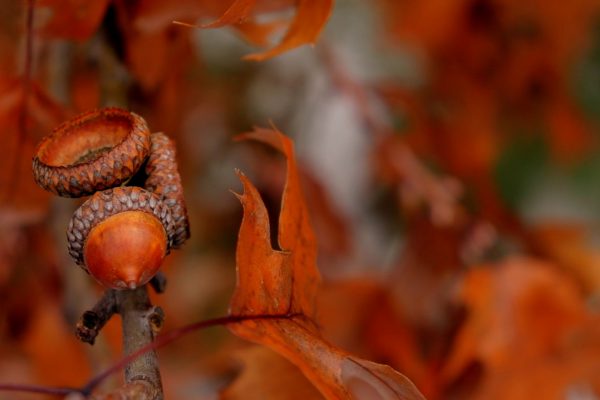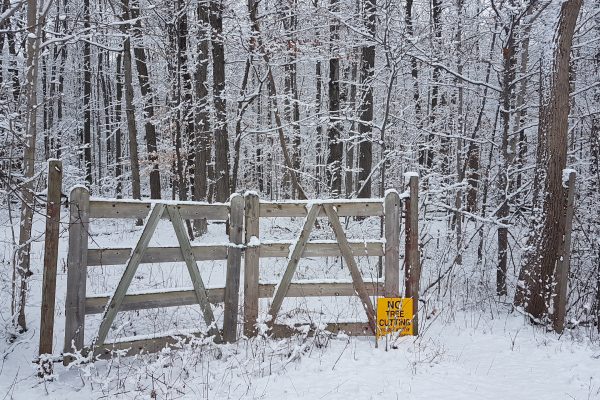Last fall we took a driving tour of the area around Wardsville to check out local natural areas. One of the areas we stopped to explore was Wardsville Woods. The entrance was easy to spot with multiple signs and informative plaques.
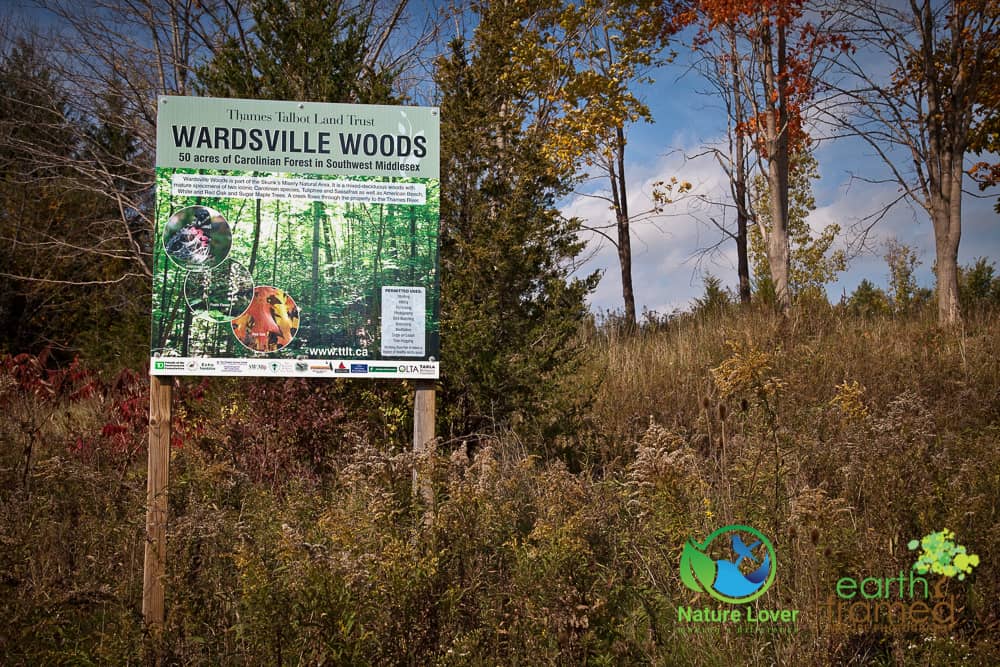
“Wardsville Woods is part of the Skunk’s Misery Natural Area. Is it a mixed deciduous woods with mature specimens of two iconic Carolinian species, Tuliptree and Sassafras, as well as American Beech, White and Red Oak and Sugar Maple Trees. A creek flows through the property to the Thames River.”
At the time the main trail wasn’t open because they were in the process of restoring some of the habitat and developing a trail system on the property. We decided to hike in a bit just to see what the landscape was like and maybe catch a glimpse of the creek.
Wildflowers and Insects
Along the trail, and even in the parking lot, we still came across a few flowers still blooming this late in the fall. Asters seemed to be the primary type with some clovers scattered here and there. The Panicled Asters will even be identifiable once their leaves die – they will dry and curl.
Asters are a very difficult type of wildflower to identify and it’s important to photograph as much detail as possible. Ontariowildflowers.com recommends learning Ontario asters in groups, starting with the most common and working your way from there.
Learn To Identify Asters
You can start learning to identify asters by checking out this site and using the books the resources they recommend. Take your time, take lots of photographs and then practice identifying them while hiking.
Prior to leaving the house we printed out the online brochure for the woods which told us that this 50 acres protected area contains a number of rare and endangered plants and animals. We didn’t see any Acadian Flycatchers or Cerulean Warblers, but it’s nice to know that the woods are creating habitat for locally significant species at risk.
The trail had been cut through a meadow and we were directed via foam core signs. The above sign had a special visitor and I could only get a shot this close before it fluttered away. The ragged wings point to this being a type of Angelwing Butterfly. 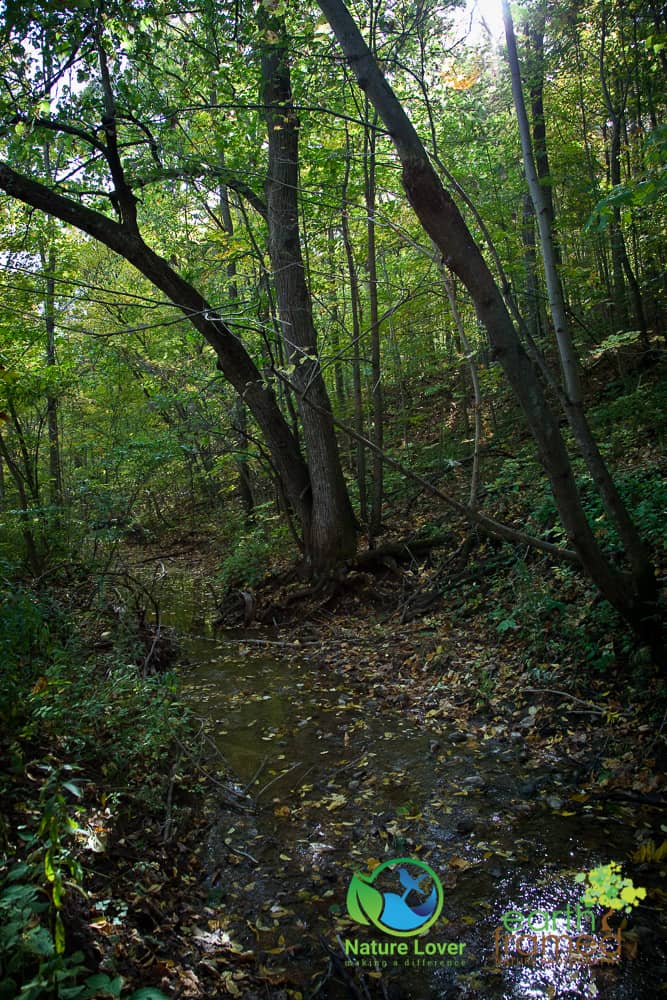
We did get a glimpse of the creek running through the woods. It was quite small and shallow but a very important feature for these woods and its inhabitants.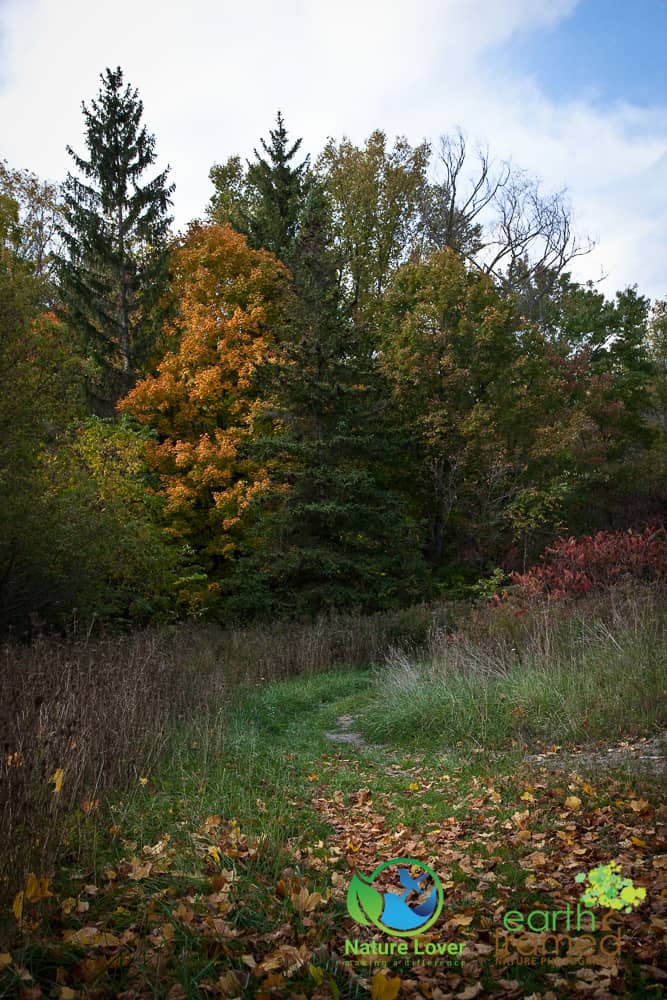
The mixed woods were fairly dense but obviously not too old. Part of the property was once a nine-hole golf course and before that it had been settled by some Irish and Scottish settlers in the 1800’s. The land wasn’t farmed but used as pasture for livestock. 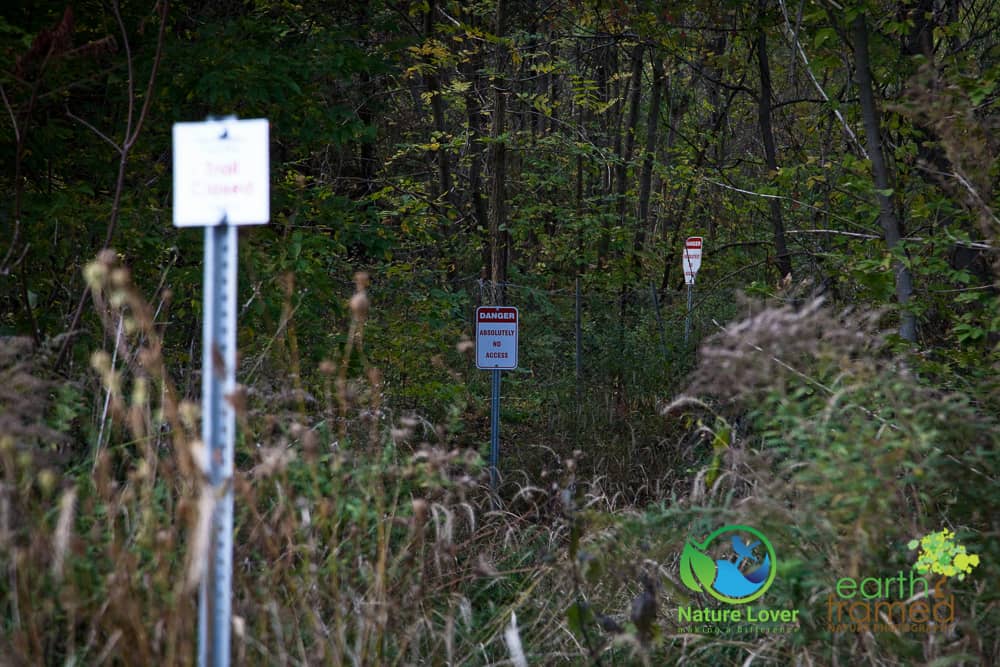
Signs were set up along an old trail informing visitors that the trail was closed and dangerous. Instead of walking through this forested area we were directed to take the trimmed path through the meadow.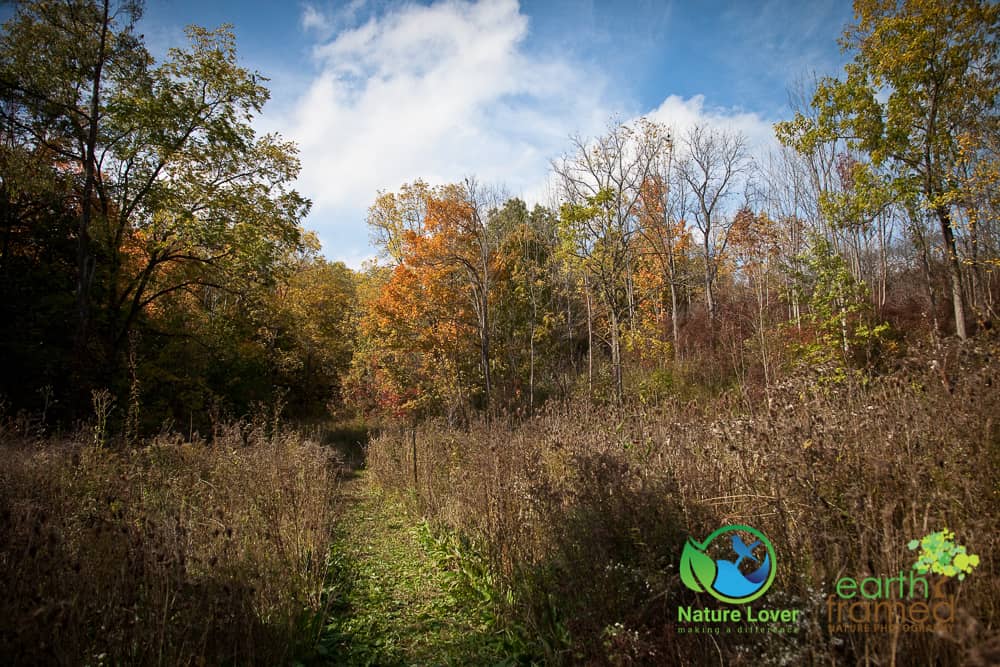
A machine had obviously been used to cut this path while the main trails are being laid. It will be interesting to see the property again after they have finished their restorations.
This area was just one of three locations that we stopped to check out so we didn’t walk the whole path. We have to be careful how long we walk Maya now because she no longer has the muscle strength or endurance to walk and hike for long periods of time. Don’t let these limitations stop you from enjoying nature with your senior dogs. Plan your hikes to be shorter and less challenging with rests in between. Know your dog’s limits but realize that daily walks isn’t only good for their physical health, it is also very important for their mental health. 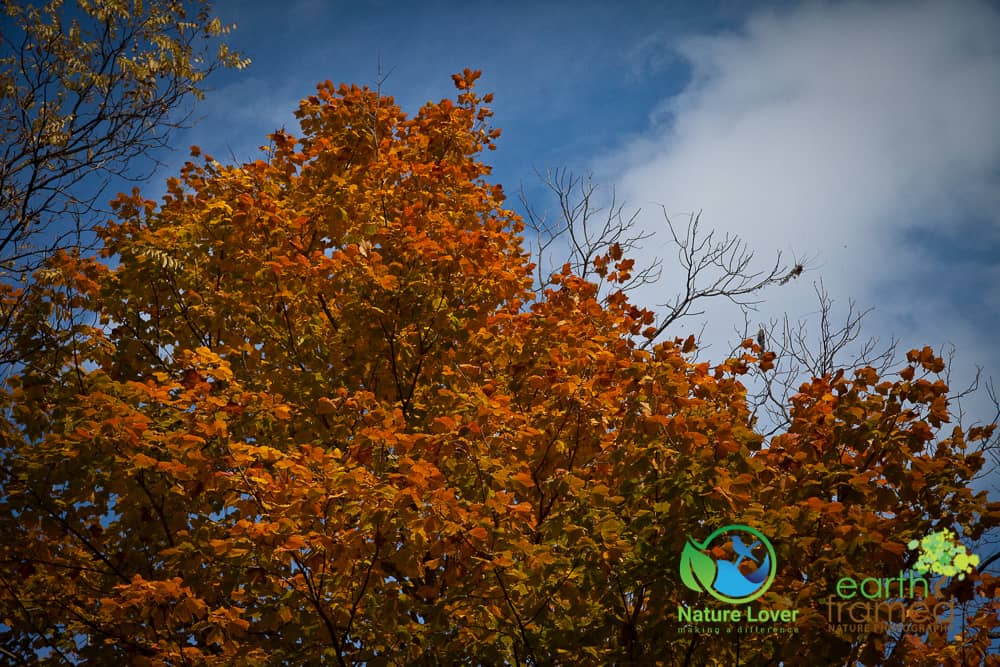
We had a beautiful fall this year and we got out to enjoy it as often as we could. The winter is now here and I’m missing those mild days.
Sources:
Moorhead, James. Guide to The Natural Areas of London and Region. Ed. Roslyn Moorhead. Fifth ed. London: Nature London, 2015. Print.
“Wardsville Woods.” Thames Talbot Land Trust. N.p., n.d. Web. 13 Jan. 2017.


